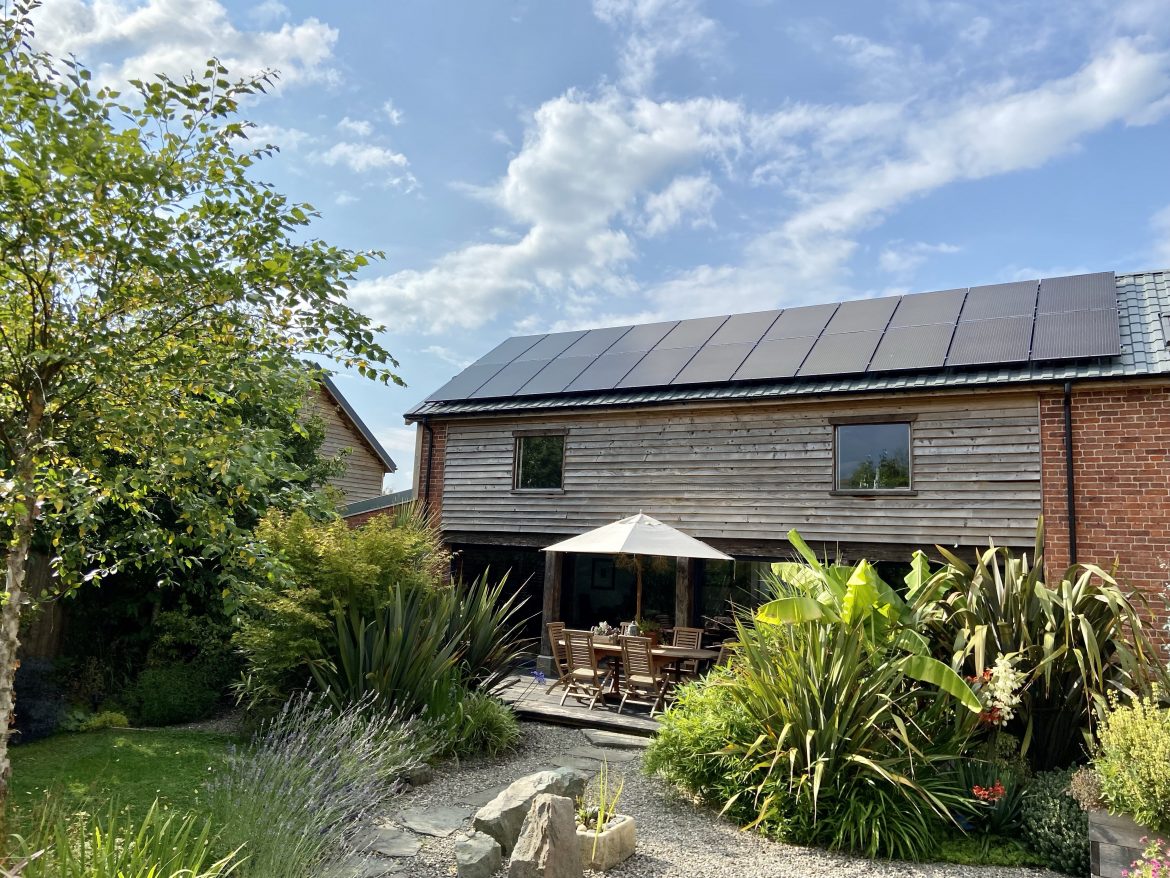We are at a crossroads. We committed to going down the sustainability route when we moved into Home Farm, and one of the major upgrades was installing an air source heat pump. At the time we looked at energy requirement projections and from a sustainability and financial perspective it looked like a simple choice to make. Two and a half years later, we’ve been placed in a tricky situation due to the rising price of electricity. I started having concerns about this in February, but things have accelerated much faster than anticipated.
When we committed to our air source heat pump in 2019, an electricity tariff of 15p (£0.15) per kWh was easy to come by. Towards the end of last year, we started to struggle to get providers at that mark, and switched to Symbio Energy, who had very low tariffs but that have been going up in small increments during 2021.
This week we received an email from Symbio that they would be increasing their set tariff to 19.453p/kWh from the 14.50p we were on since March.
In the February post about our concerns, we used our January data to calculate and project potential running costs. We consumed 2,231 kWh of electricity in January (the bulk of which was used by the air source heat pump) and that was on a very competitive tariff (around 11p/kWh). Since March, we’ve been paying 14.5p/kWh and as of this week we’re on 19.5p/kWh. That’s a steep price increase in a very short period of time. If we fast forward to January 2022, and we have similar consumption on the back of another cold winter, what would that mean?
The numbers aren’t great. In January 2021, we paid £245 for consuming 2,231 kWh of power (excluding standing rates). By comparison, on our latest bombshell of a tariff, we would pay a staggering £435. This is a ridiculous extra amount of money. I’ve scoured the comparison websites and have filled in loads of quotes, and the cheapest tariff we can now get is 18.5p/kWh.
The UK government has been pushing households to switch to heat pumps, but with these crazy tariffs, it’s simply not viable from a financial perspective when compared to other fuels.
The latest rate from our oil club is under 40p per litre for diesel. That means we could heat our house in January for £200, £50 less than our best running cost using renewable heating, and £235 cheaper than our new electricity tariff. The financial portion of the equation is dramatically out of whack with the sustainability part. Quite frankly, the cost of being sustainable simply ceases to be viable, and at some point personal financial sustainability has to be taken into account.
As a side point, I don’t know how electricity tariffs work, but we’re in a rural setting in the Welsh borders and our tariffs are higher than in cities and towns, which is a discriminatory practice given the standing fees we are all paying to maintain the grid. I know of people living near big cities that are still getting a rate of 15p/kWh from Symbio Energy.
I firmly believe that the UK government must do something to address the spiralling cost of electricity because the cost of sustainable, renewable heating is not financially sustainable in its current state. And it doesn’t matter if you have a small or large home. The price of heating will catapult for all heat pump owners, and they’ll be paying more for their heating this winter if prices don’t come down.
So we will need a contingency in case we can’t find a tariff closer to 15p/kWh. My initial thought process is to make our bivalent system more bivalent, while not affecting our RHI payments. I will call our heat pump manufacturers, Global Energy System, and speak to them about how we can set up our system so that the heat pump only works when outdoor temperatures are above 5C, as this is our threshold at which the heat pump becomes less efficient and starts to consume much more power. If temperatures drop below 5C, the oil boiler will take over the heating. I’m hoping that the software and system can do something like this.
We may even consider running the heat pump during the day only, and letting the oil boiler take over the night shift. We’ll see how things unfold in the weeks ahead, and at least we have time to come up with a solid plan.
I’m certain that we are not alone in facing this dilemma, and it poses a real problem for sustainable, renewable heating. If the only financial alternative for people is burning fossil fuels, what hope do we have of cutting carbon emissions?
The last thing we want to do as a household, which is trying to be as sustainable as possible, is to burn through for 500 litres of oil a month to heat the house, but our choices have been greatly reduced by the rising electricity tariffs. Has the cost of heat pump sustainability already become too high? I hope not, but we’ll have to see what the future has in store.
